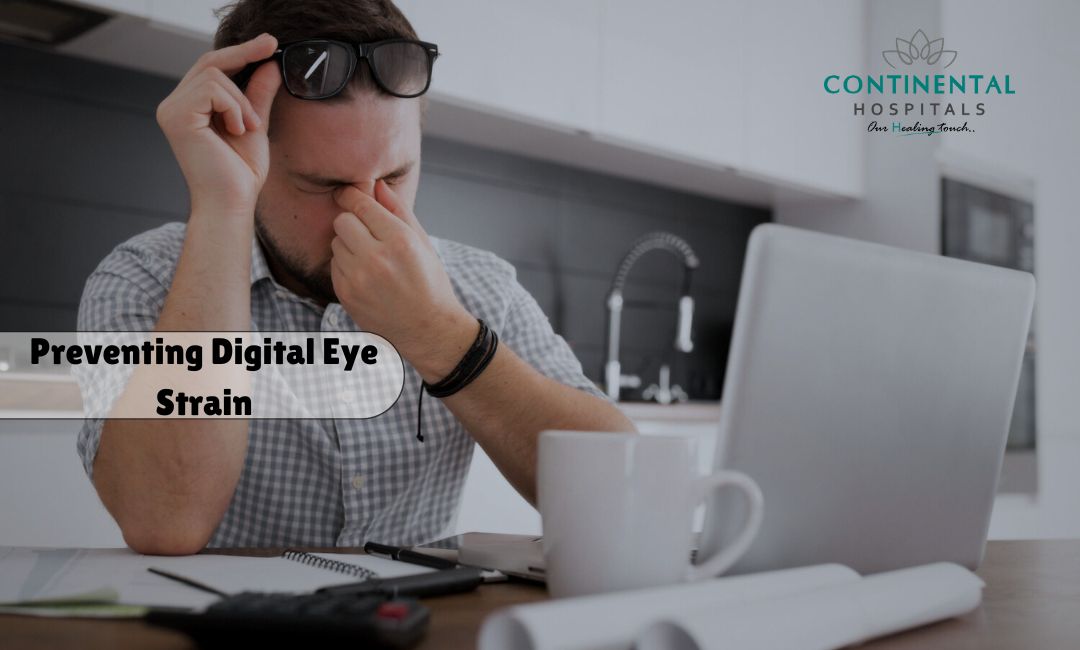In today's digital age, prolonged screen time for work, study, or leisure can lead to digital eye strain (CVS). This condition, caused by factors like screen glare, blue light exposure, and poor ergonomics, manifests through symptoms such as eye discomfort, headaches, and blurred vision. Preventative measures include adjusting screen settings, optimizing workspace ergonomics, taking regular breaks, and using blue light filters. Prioritizing healthy vision is crucial, as it not only enhances daily functioning but also ensures long-term eye health and well-being in an increasingly screen-centric world.
Understanding Digital Eye Strain
Digital eye strain is a common problem caused by extended use of computers, smartphones, tablets, and other electronic devices that emit blue light. The symptoms may include:
Eye Discomfort: Dryness, irritation, or burning sensation.
Blurred Vision: Difficulty focusing or seeing clearly.
Headaches: Often starting around the eyes or forehead.
Neck and Shoulder Pain: Due to poor posture or strained muscles.
Light Sensitivity: Increased sensitivity to light.
While digital eye strain typically isn't serious, it can be bothersome and affect productivity and quality of life, especially for individuals who spend many hours in front of screens each day.
Symptoms of Digital Eye Strain
Recognizing the symptoms of digital eye strain can help you take preventive measures:
Eye Discomfort: Dryness, irritation, or a burning sensation in the eyes.
Blurry Vision: Difficulty focusing on objects after prolonged screen use.
Headaches: Tension headaches, often felt around the forehead or temples.
Neck and Shoulder Pain: Due to poor posture and prolonged sitting.
Importance of Preventing Digital Eye Strain
Enhanced Productivity: Minimizing eye discomfort and fatigue allows you to work more efficiently and effectively, especially during prolonged screen use.
Long-term Eye Health: Consistent digital eye strain can contribute to the development of more serious eye conditions over time. Preventing strain helps preserve your vision for the future.
Quality of Life: Reducing discomfort such as headaches and eye irritation enhances overall well-being, making everyday activities more enjoyable.
Better Sleep: Prolonged screen time, especially before bed, can interfere with sleep quality. Managing digital eye strain helps promote better sleep patterns.
Maintaining Focus: By preventing eye strain, you can maintain better focus and concentration, whether at work, school, or during leisure activities.
Tips for Preventing Digital Eye Strain
Adjust Your Workspace
Monitor Positioning: Position your computer screen about an arm's length away and slightly below eye level to reduce strain on your eyes.
Lighting: Minimize glare by positioning your screen away from windows and using curtains or blinds to control natural light. Use indirect lighting to reduce reflections and eye strain.
Follow the 20-20-20 Rule
Every 20 minutes, look at something at least 20 feet away for at least 20 seconds. This allows your eyes to relax and refocus, reducing the strain caused by continuous screen use.
Blink More Often
Blinking helps moisten your eyes and prevent dryness, which is common during prolonged screen time. Be mindful to blink regularly, especially when concentrating on digital devices.
Use Proper Display Settings
Adjust the brightness and contrast of your screen to a comfortable level. Consider using blue light filters or applications that adjust screen color temperature to reduce the amount of blue light emitted, which can contribute to eye strain and disrupt sleep patterns.
Take Regular Breaks
Schedule breaks throughout your day to rest your eyes and stretch your body. Use breaks to walk around, stretch your legs, and give your eyes a chance to relax from screen exposure.
Practice Good Ergonomics
Maintain good posture while using digital devices. Use an ergonomic chair and position your keyboard and mouse at a comfortable height to prevent neck, shoulder, and back strain, which can contribute to eye discomfort.
Keep Your Eyes Hydrated
Stay hydrated by drinking an adequate amount of water throughout the day. Proper hydration helps maintain tear production and prevents dry eyes, a common symptom of digital eye strain.
Consider Computer Eyewear
Specialized computer glasses or lenses with anti-reflective coatings can help reduce glare and filter out harmful blue light from digital screens, providing additional protection against digital eye strain.
Limit Screen Time Before Bed
Avoid using digital devices at least an hour before bedtime to allow your eyes and brain to relax and prepare for sleep. Exposure to blue light before bed can disrupt your circadian rhythm and negatively impact sleep quality.
Regular Eye Exams
Schedule regular comprehensive eye exams with an optometrist to monitor your eye health and ensure any vision problems are detected and corrected early.
Conclusion
By incorporating these tips into your daily routine, you can effectively prevent digital eye strain and promote overall eye health. Remember, proactive measures such as adjusting your workspace, taking regular breaks, and using proper display settings are key to reducing the impact of prolonged screen time on your eyes. Prioritize your eye health to enjoy a more comfortable and productive digital experience. Your eyes will thank you for it!
Start implementing these practices today to protect your vision and maintain optimal eye health in our digital world. With these strategies, you can enjoy the benefits of technology without compromising your eyesight.
Related Blogs:
.webp)







